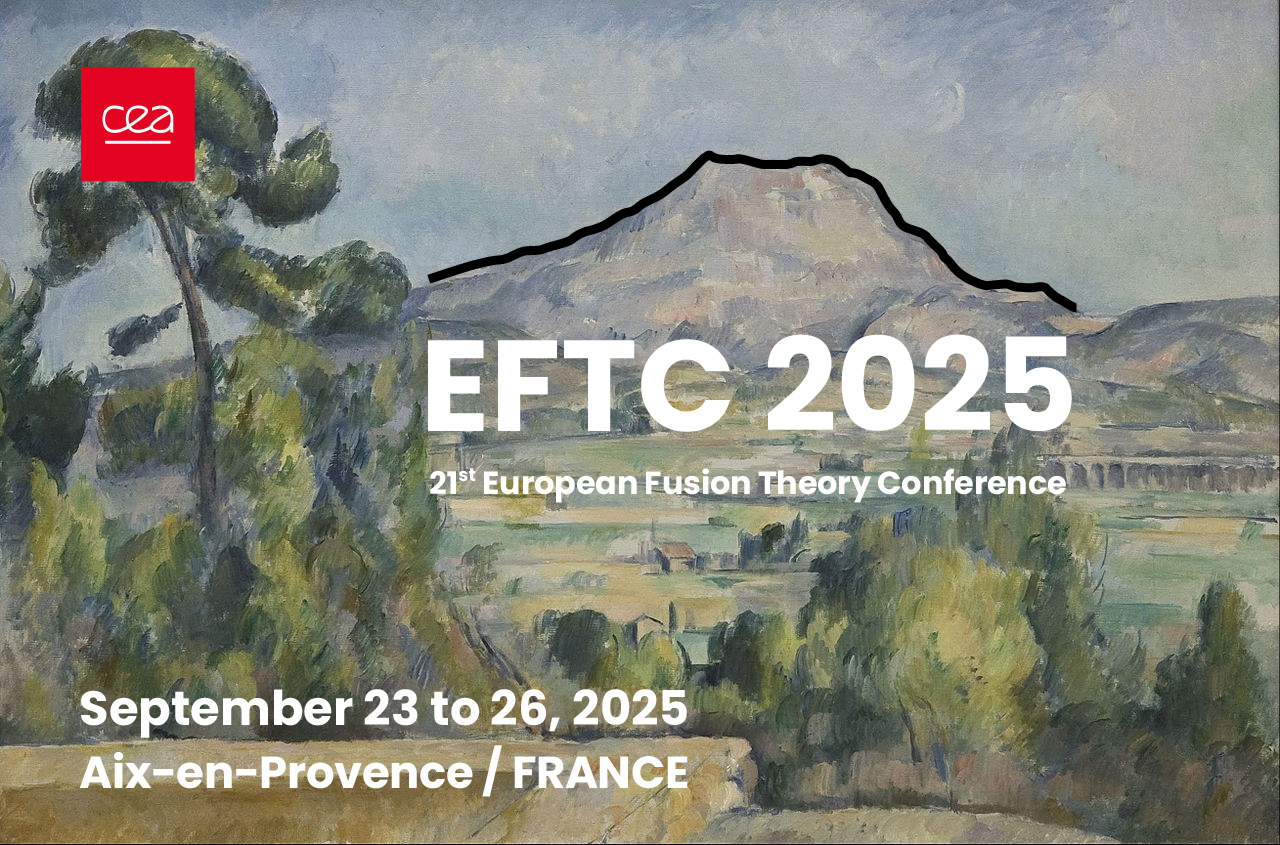Speaker
Description
A disrupting plasma in a high-performance device such as ITER and SPARC may generate
large runaway electron (RE) currents that, upon impact with the tokamak wall, can cause
serious damage to the device. To quickly identify regions of safe operation in parameter
space, it is useful to develop reduced models and analytical criteria that predict when a
significant fraction of the Ohmic current is converted into a current of runaway electrons.
Such models have previously been developed for Dreicer [1,2] and hot-tail [3] seed currents.
In DT experiments however, the contributions to the seed current from tritium decay and
Compton scattering may also be significant or even dominant. In this work, we extend
previous work and develop a semi-analytic criterion that includes seed currents from tritium
decay and Compton scattering. In addition, the avalanche multiplication factor includes
effects of partial screening of injected noble gasses [4]. The result is a semi-analytic model
that can predict significant RE generation in the next generation of activated devices and is
suitable for integrated modeling. The model is validated by fluid simulations using DREAM
[5] and is shown to delineate regions in parameter space of significant runaway generation.
[1] P Helander, L-G Eriksson and F Andersson (2002). Runaway acceleration during magnetic
reconnection in tokamaks. Plasma Phys. Control. Fusion 44, B247–B262
[2] H Smith, P Helander, L-G Eriksson, D Anderson, M Lisak and F Andersson (2006).
Runaway electrons and the evolution of the plasma current in tokamak disruptions. Phys.
Plasmas 13, 102502
[3] T Fülöp, H M Smith and G Pokol (2009). Magnetic field threshold for runaway generation
in tokamak disruptions. Phys. Plasmas 16, 022502
[4] L Hesslow, O Embréus, O Vallhagen and T Fülöp (2019). Influence of massive material
injection on avalanche runaway generation during tokamak disruptions. Nucl. Fusion 59,
084004
[5] M Hoppe, O Embréus and T Fülöp (2021). DREAM: a fluid-kinetic framework for
tokamak disruption runaway electron simulations. Comput. Phys. Commun. 268, 108098

